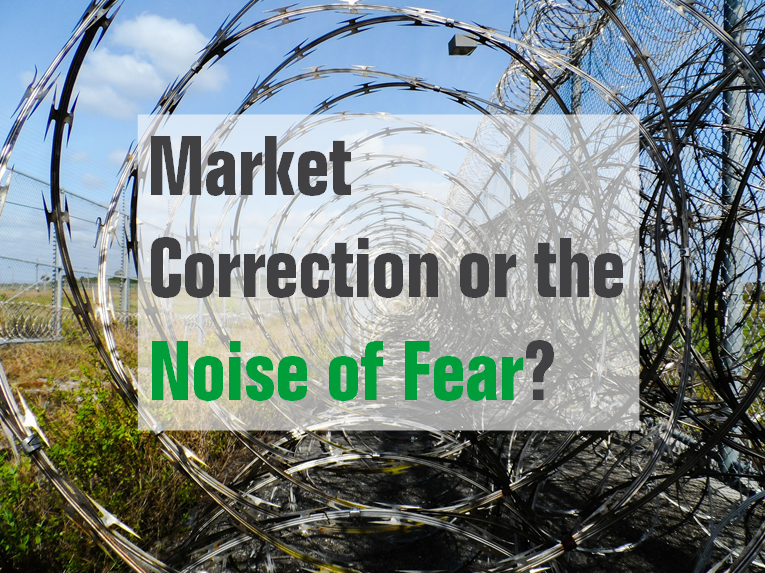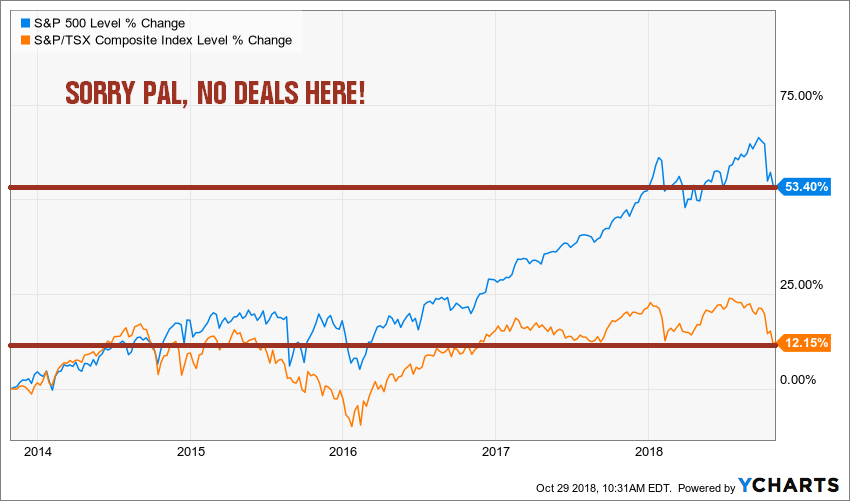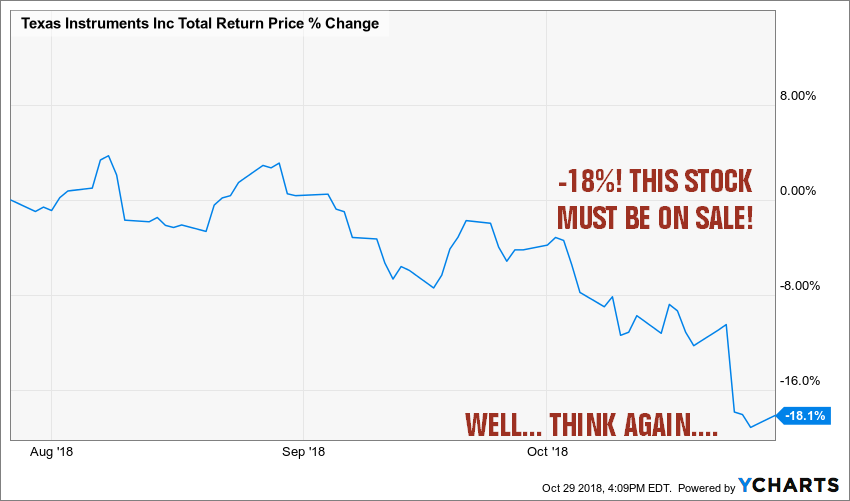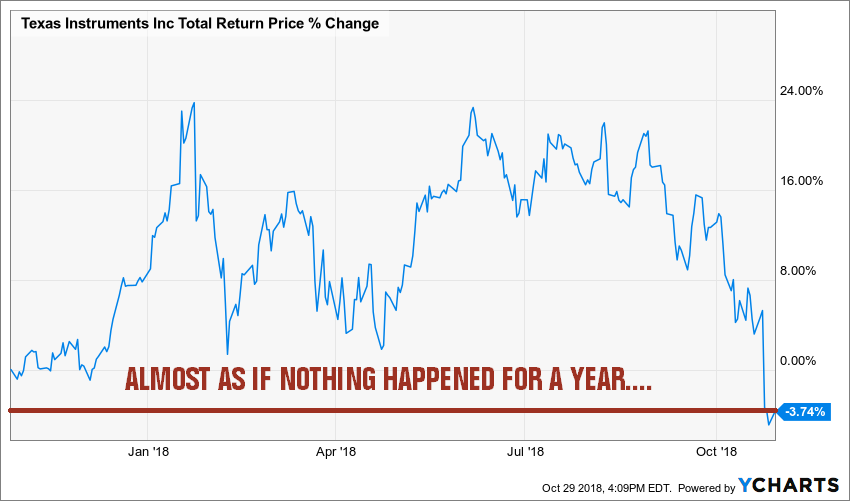
I understand that the latest market movements have made several investors quite nervous. You worked so hard to save money, you don’t want to see your nest egg melting away overnight. However, what is currently happening is insignificant. In fact, we really can’t even talk about a market correction yet. By definition, a market correction occurs when major indexes drop by more than 10% from their highest peak. We flirted with meeting this definition over the past couple of weeks, but we didn’t cross the psychological mark of 10%.

Market Correction Vs Bear Market
We tell the world we hit a bear market when indexes are down by more than 20%. What is happening right now is just noise in the library disturbing a good read. Here’s a quick recap of the main differences between a bear market and a market correction:
| Correction Vs Bear | Correction | Bear Market |
| Price movement | Market is down between 10% and 20%. | Market is down more than 20%. |
| When does it happen? | All the time (about every 2 years). | Roughly once every decade now (2 since 2000). |
| Average time to recover | 4 to 6 months. | 18 to 24 months. |
| Worst loss | 20% (by definition). | 62% in 1931. |
| What should you do during such event? | Keep your investing strategy. |
Keep your investing strategy. |
Source: Seeking Alpha, Fox Business, Financial Post, Fools.ca, Market Watch
As you can see, I didn’t include exact numbers and statistics. This is because I keep getting different metrics from one source to another. I thus decided to make an “average” and emphasize what really matters: keep-up with your investing strategy now matter what happens.
Because trying to determine when the market goes into a correction or into a bear market is an impossible task that doesn’t serve you well.
Wait for the correction before you invest?
Last year, I receive a large amount (108K) as the commuted value of my pension plan. While we were at the summit of the market in September 2017, I decided to go “all-in” and invested the full proceed of my pension account. After a month, I had 76K invested and completed my portfolio a few months afterward. Many readers were suggesting that I wait and not invest the money right way. They used popular words such as “average your cost”, “balance your portfolio”, “time the market”, etc.
The whole point was to sit on the sidelines with 30%-40% of my portfolio in cash and wait for the market to drop. Wait for a market correction. This whole strategy of waiting for a correction was brought back on the table not too long ago as the market almost reached the famous -10% level. But were you getting any deals? In fact, those who have been waiting will continue to do so because there are no deals here:

Source: Ycharts.
As you can see on this chart, those who waited to buy in the past 2 weeks are actually paying the same price than a year ago. Therefore, they had their money sitting on the bench for about 12 months for absolutely nothing. Even worst, if they have been waiting since before 2017, it’s almost impossible for them to get a better deal in the future.
Another example; the stock down 20% that is still not on sale!
I like to use real-life examples to prove my point. Not too long ago, Texas Instruments (TXN), that is part of my top tech dividend stocks list, saw their share price tumble like there was no tomorrow. A combination of weaker demand, concerns about China and the trade war along with disappointing revenue growth in their last quarter pushed TXN down by almost 20% over the past 3 months.

Source: Ycharts
IN fact, TXN is trading only 3% lower than a year ago (total return price, dividend included):

Source: Ycharts
As you can see, the “big sale” on TXN just happened in the eye of new investors. Those who bought TXN a year ago… or any time earlier than 2017 don’t see the deal.
The reason to go “all-in”
Many investors don’t understand why I decided to go all-in. I even explained it throughout a free webinar (you can watch the replay here). What happened to TXN is only part of the explanation. In fact, if you go back all the way to the beginning of this article and check the “market correction vs. bear market” chart again, you will notice that corrections happen all the time and take about 4-6 months to recover. Therefore, investing right before a market correction won’t change your portfolio much a year from now. The point of waiting until it happens just doesn’t make any sense. Each day you wait, you let money dying on the table.
I agree that the best time to invest your money is right after (or during) a bear market. Some bears bring value down by 40% to 50% which brings real investing opportunities. However, since this only happens about every 7-8 years (read a decade!), chances are you will be wrong for a very long time before entering the market.
Do you invest in “anything”?
Now the real question is not to invest or not, but rather how to invest your money. Before I started to “pull the trigger” on the market, I did my homework. I studied the market, pulled-out many filters and read hundreds of earnings reports before making my decisions. I’ve started my research using the dividend triangle on each candidate. The point is not to find the deal of the day, but rather find companies that will be still leaders in 10 years from now. Those will rapidly recuperate from a market crash and you don’t have to worry about their dividend payments in the meantime.
A good starting point to find such a company would be the Dividend Achievers list. Those companies show at least 10 consecutive years with a dividend increase. Why not take the Dividend Aristocrats (25 years) or the Dividend Kings (50 years)? Simply because you want a wide choice (the achievers list contains close to 275 stocks) and you don’t want to miss the future aristocrats. Impressive companies such as Microsoft (MSFT), Lockheed Martin (LMT), Lazard (LAZ) and Hasbro (HAS).
In the end, if you invest in strong dividend growers, it doesn’t really matter when you pick them. All that matter is that you do!
Disclaimer: I own shares of TXN, MSFT, LMT, LAZ, HAS.
Image source: pixabay
The post We can’t talk about a market correction yet appeared first on The Dividend Guy Blog.
